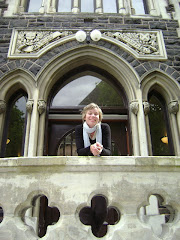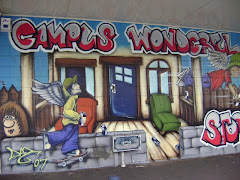Task One: Follow instructions to set up a account with Blogger
This will involve setting up a Google account (make note of your user name and password)
Task Two: Follow instructions to complete the following Blog construction tasks
Choose a Blog Template (this can be changed later if you wish)
Provide a Blog title (this will need to incorporate your name and the course title Participation in Occupation )
Provide a Blog outline. This is a short statement outlining the purpose of the Blog (this information should come from the course outline and assessment guidelines for Participation in Occupation 1).
Complete your Blog profile (you need to include your age, gender, industry, occupation and location)
Up load a photo to your Blog profile
Task Three: Follow instructions to start posting content. Your first two post should be taken from the technical descriptions for tutorials one and two.
Task Four: Provide a brief summary of the services offered by Blogger (this will be your third posting. Information can be drawn from the attached hand out). In addition to this name one other Blog host.
A Blog is a Collaborative space which can be filled in any way. From a diary to a collection of photos and images. Blogger offers a number of options to organize your homepage and the content in it. This includes the following:
Publish your thoughts
A blog gives you your own voice on the web. It's a place to collect and share things that you find interesting— whether it's your political commentary, a personal diary, or links to web sites you want to remember.
Many people use a blog just to organize their own thoughts, while others command influential, worldwide audiences of thousands. Professional and amateur journalists use blogs to publish breaking news, while personal journalers reveal inner thoughts.
Whatever you have to say, Blogger can help you say it.
Engage your friends
Blogging is about more than just putting your thoughts on the web. It's about connecting with and hearing from anyone who reads your work and cares to respond. With Blogger, you control who can read and write to your blog — let just a few friends or the entire world see what you have to say!
Blogger Comments let anyone, anywhere, offer feedback on your posts. You can choose whether you want to allow comments on a post-by-post basis, and you can delete any comments you don't like.
Access Controls let you decide who can read and who can write to your blog. You can use a group blog with multiple authors as an excellent communication tool for small teams, families and other groups. Or as a single author, you can create a private online space for collecting news, links, and ideas, to keep to yourself or share with as many readers as you want.
Blogger Profiles let you find people and blogs that share your interests. Your Blogger Profile, where you can list your blogs, your interests, and more, lets people find you (but only if you want to be found).
Design your blog
Whether you're starting your blog or just think it's time to give your existing blog a facelift, Blogger's user-friendly editing tools help you easily design a great-looking page.
Templates — Our collection of templates will get you started with an attractive site right away without you having to learn any HTML, though Blogger also allows you to edit your blog's HTML code whenever you want.
Custom colors and fonts — When you're ready to take the next step, you can further customize our templates to create a design that perfectly reflects you and your blog.
Drag-and-drop page elements — Blogger's simple drag-and-drop system lets you easily decide exactly where your posts, profiles, archives and other parts of your blog should live on the page.
Post photos
Sometimes you just want to share a photo. There's a button for uploading photos in the Blogger interface. Just click the photo button to upload a photo from your computer. If the photo you'd like to put on your blog is already on the web that's fine too. Just tell us where it is.
You can also send camera phone photos straight to your blog while you're on-the-go with Blogger Mobile.
Go Mobile
Blogger Mobile lets you send photos and text straight to your blog while you're on-the-go. All you need to do is send a message to go@blogger.com from your phone. You don't even need a Blogger account. The message itself is enough to create a brand new blog and post whatever photo and text you've sent.
Later, if your want to claim your mobile blog or switch your posts to another blog, just sign in to go.blogger.com and use the claim code Blogger sent to your phone.
While Blogger Mobile is currently only available in the US, you can always send posts to your blog using Mail-to-Blogger.
Get started
The fastest way to understand blogging is to try it out. We've worked really hard to make it really easy for you. Just click the link below, and you can be part of the phenomenon that's transforming web and media to a participatory activity in less than five minutes. Seriously.
What will happen then? Who knows. It might be fun, though.
And remember: Blogger is totally free, and if you have trouble, just click the Help button from any screen, and you can find the answer you're looking for—or even ask our dedicated support staff
Task Five: Upload 5 photos from tutorial 5 onto your flickr account.
Any remaining time can be spent
· Exploring Blogs hosted by Blogger and other services (e.g.myspace)
· Setting up a personal Blog
· Organising your flickr account into groups

